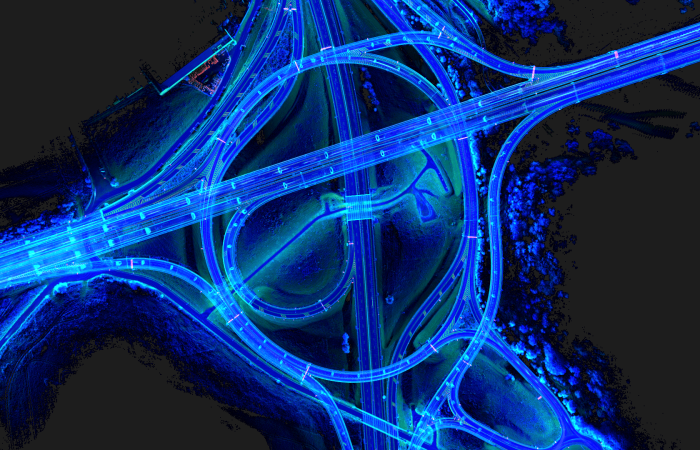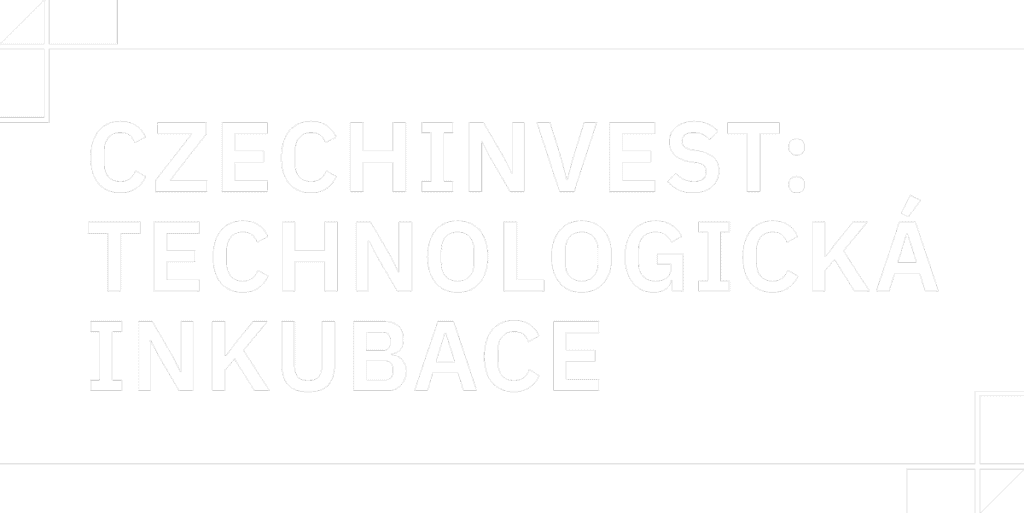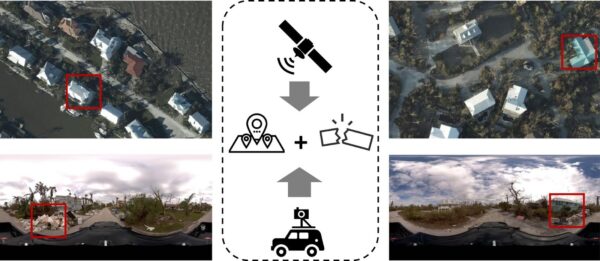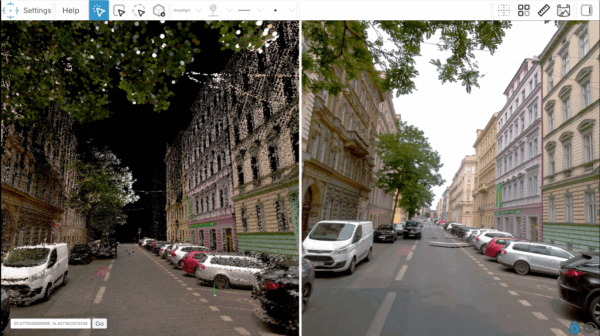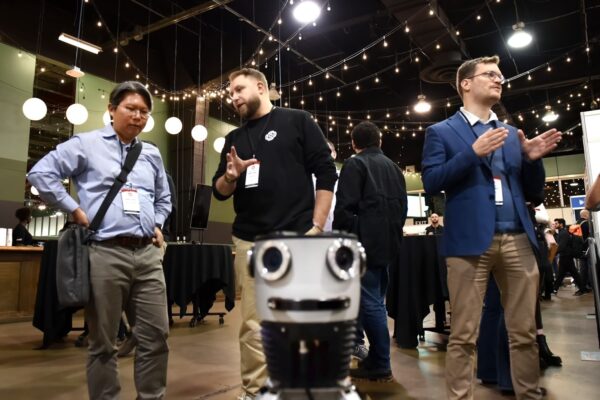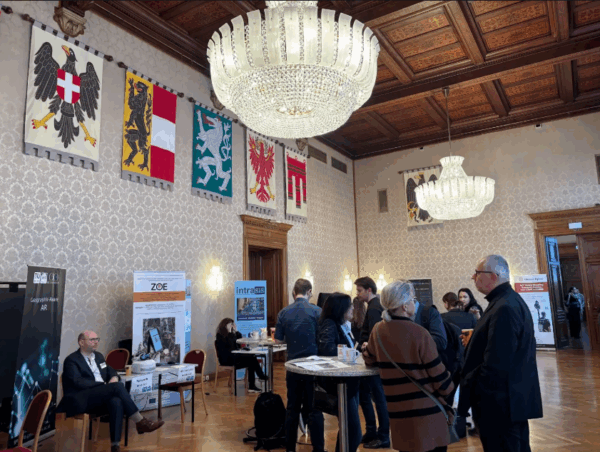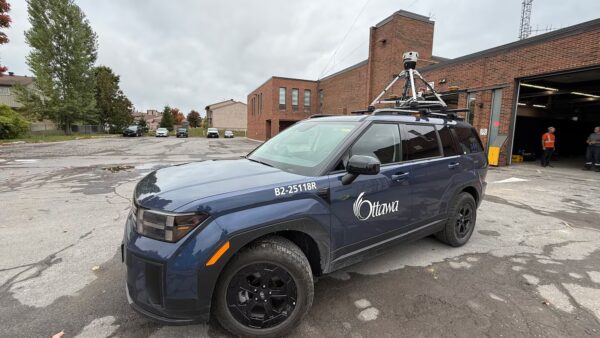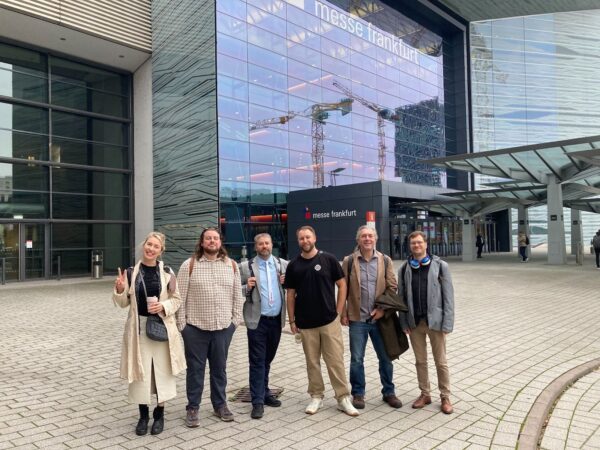Navigating a new path for mobile mapping and immersive environments
As 2025 begins, we see a significant convergence of technology primarily used for mapping and surveying, expanding more readily, efficiently, and accessible into fields related to VFX, AR/VR, metaverse development, and video gaming.
Additionally, our latest release, an imagery-focused mobile mapping system, highlights the importance of photogrammetry and imagery-based workflows. It redefines data collection efficiency and confirms our belief that imagery and photogrammetry represent the path forward for many industries.
Here’s how we foresee the industry evolving and how Mosaic plans to lead these advancements.
Technological Innovations: Revolutionizing Mobile Mapping and Beyond
In 2025, we anticipate breakthroughs in the integration of physical and virtual worlds. Technologies like NVIDIA Omniverse will serve as pivotal platforms for creating “physical AI”—AI systems that learn and refine their capabilities in realistic, physics-driven virtual environments. Mosaic’s high-resolution imagery and the Meridian Mobile Laser Scanner have a natural synergy with these systems, providing the detailed, photorealistic datasets necessary to train and validate AI models for robotics, autonomous vehicles, and virtual experiences.
The Meridian sets itself apart from traditional laser scanning tools by optimizing the amount of data collected. While many competitors prioritize gathering excessively dense datasets, this approach often overwhelms workflows and complicates analysis. In contrast, Meridian strikes the perfect balance: it collects just the right amount of data to ensure AI models and automated point cloud evaluation software function seamlessly. This approach not only accelerates the data collection process but also simplifies management, ensuring users focus on actionable insights rather than sifting through unnecessary noise.
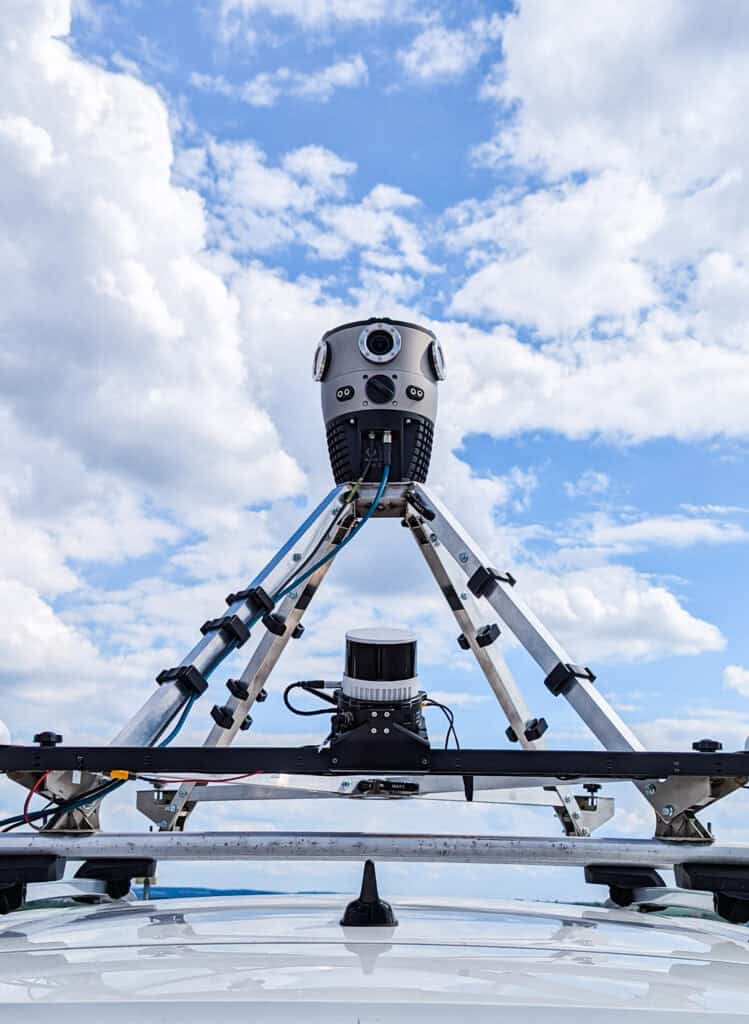
While laser-based mobile surveys remain critical for many applications, an increasing number of tasks can now be efficiently handled using high-quality panoramic imagery. Applications such as manhole detection, infrastructure mapping and maintenance, and traffic sign inventories are all well-suited to image-based surveys. Mosaic identified this trend early on, and today, the Mosaic X and Mosaic 51 cameras meet these evolving needs. These systems provide high-resolution imagery that enables precise, cost-effective, and user-friendly solutions for various industries.
Mosaic’s cameras and laser scanning tools have also been instrumental in various industries beyond traditional mapping. For instance, the case study of VFX production on The Instigators demonstrates how Mosaic 360 imaging streamlines complex workflows, bringing unparalleled realism to Hollywood productions. Similarly, projects like reviving historical sites using Mosaic’s advanced capture and processing technology showcase how our tools preserve cultural heritage while enabling new forms of engagement.
Additionally, Mosaic is paving the way for digital twins in games and movies, as highlighted in our feature on creating digital twins for faster, cheaper complex projects. By leveraging our technology, creators can simulate entire environments with unprecedented detail, transforming how industries approach large-scale production challenges.
Market Trends: Meeting Changing Demands
Consumer and market behavior in 2025 will lean heavily on adaptability and immediacy. Industries such as entertainment, urban planning, and logistics are increasingly seeking tools that allow them to capture and analyze data with minimal downtime and maximal detail. The Meridian Mobile Laser Scanner is well-positioned to meet these demands, offering ease of use and affordability without sacrificing quality.
Furthermore, the industry faces a critical challenge: excessive data generation. Many tools on the market produce overly dense datasets that require significant resources to process and analyze. Mosaic’s approach, embodied by the Meridian, prioritizes precision over quantity, ensuring that users can extract actionable insights efficiently. This philosophy aligns with the growing demand for simplicity and speed in data workflows.
In addition, the demand for immersive experiences will surge. Consumers will expect AR/VR environments and metaverse platforms to mirror real-world physics and visuals. By providing detailed, scalable, and high-quality imagery, Mosaic’s technology will play a key role in shaping these experiences. Our cameras and scanners can be integrated into workflows for creating virtual twins of real-world environments, ensuring that developers and creators have the data they need to produce next-level immersive content.
Artificial Intelligence Integration: Paving the Way for Physical AI
The role of AI in our industry cannot be overstated. In 2025, AI will not just analyze data—it will learn from and interact with it in real time. Mosaic is working to integrate our imagery systems and the Meridian scanner with AI-driven platforms like NVIDIA Omniverse, enabling creators and engineers to train AI in virtual spaces that faithfully replicate the physical world.
This concept of “physical AI” aligns precisely with Mosaic’s mission. By enabling robots, autonomous vehicles, and other systems to learn in a simulated yet physics-accurate environment, we can accelerate innovation while reducing real-world risks. Mosaic cameras and the Meridian scanner are already contributing to this shift, capturing the hyper-detailed imagery needed to create virtual twins of cities, highways, and other critical infrastructure.
Consider the implications for the metaverse: Mosaic’s tools could become foundational for building the next generation of virtual environments. Our systems provide the rich datasets required for training AI and designing immersive AR/VR experiences, ensuring that virtual worlds feel just as authentic as the real one.
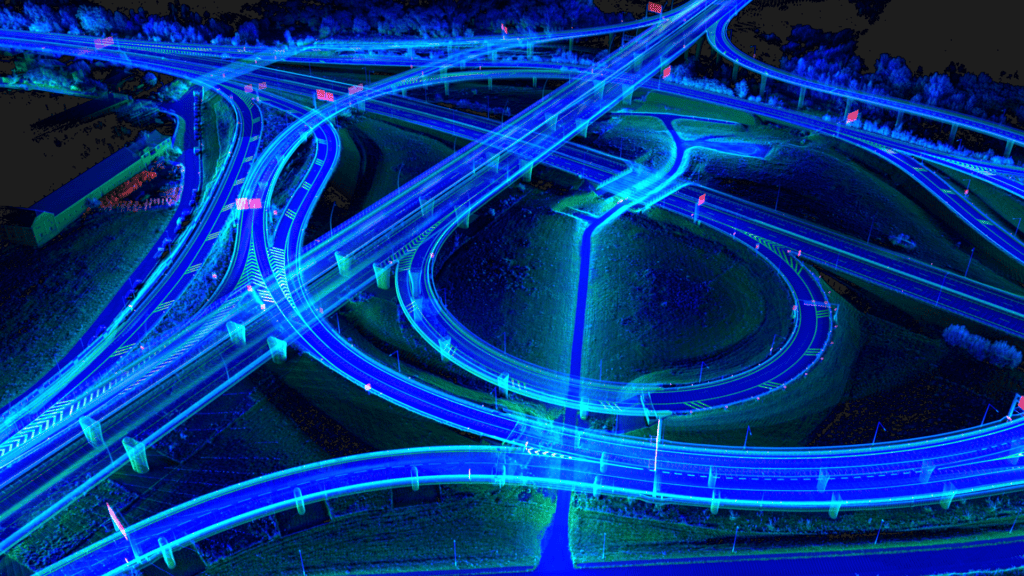
Convergence of Technologies: A Unified Future
The convergence of geospatial data, VR, ML/AI, Hollywood, autonomous driving, and VFX underscores a transformative era for technology. Mosaic is at the heart of this intersection, providing the tools necessary to bridge these domains. Whether it’s enabling filmmakers to create realistic environments, supporting autonomous systems with precise spatial data, or empowering metaverse developers to build immersive digital landscapes, high-resolution 360 imagery plays a crucial role.
Our work with Odyssey and other partners highlights this convergence. Odyssey’s use of the Mosaic Xplor for generative AI and urban planning exemplifies how different industries can leverage a shared technological foundation to drive innovation. Similarly, our collaborations with VFX studios and autonomous vehicle developers show how our tools enable breakthroughs across seemingly disparate fields.
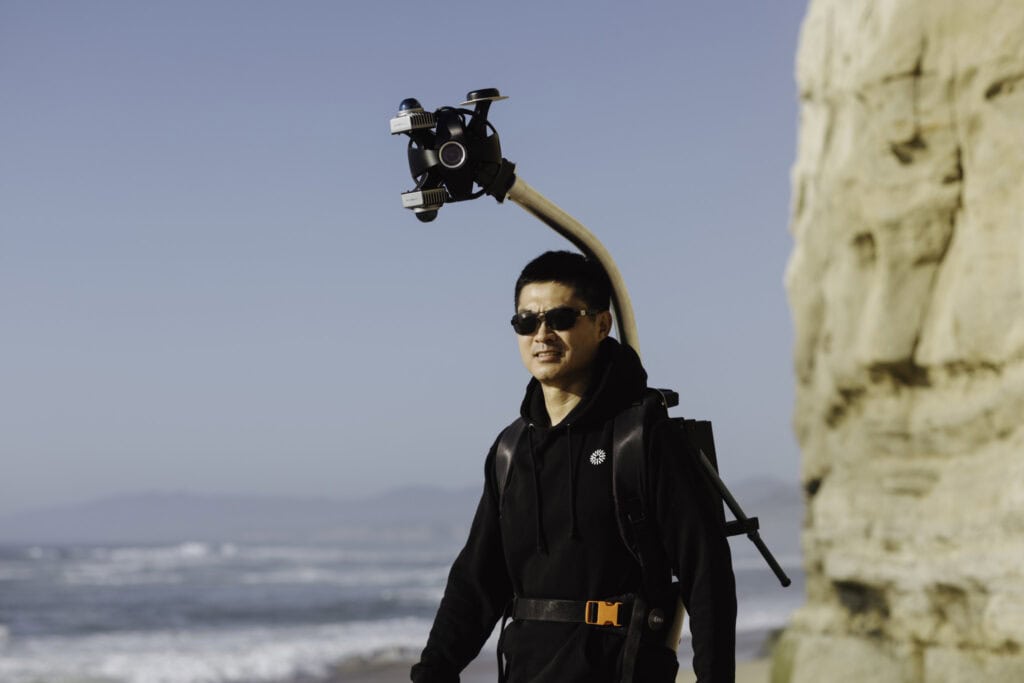
Leading the Charge
To support these advancements, Mosaic is:
- Investing in Metaverse-Specific Hardware: We’re exploring camera systems optimized for metaverse applications, including robotics and AR/VR environments.
- Expanding Collaborative Opportunities: Collaborations with companies like Odyssey inspire us to push the boundaries of what our cameras and scanners can achieve, from advanced generative models to AI-driven urban development.
- Optimizing Data Workflows: The Meridian’s efficient data collection ensures users can work faster and focus on what matters most.
- Showcasing Case Studies: Real-world examples like our work in VFX, historical preservation, and digital twin creation underline the versatility and value of our technology. These partnerships demonstrate how our tools can be used for AI model training, city planning, and beyond.
More Insights From the Mosaic Team:
“AMD wakes up and finally realizes the huge opportunity to be on the home PC LLM market. Maybe by releasing unified memory solutions, maybe by finally trying to hit the high-end GPU market with the proper amount of VRAM. They started catching up in 2024 with their drivers and frameworks support, and I hope the trend will continue into releasing HW suitable for LLM-related tasks.”
Ilia Shipachev, Lead Computer Vision Engineer
“More companies in FTTX will start to take advantage of 360 imagery as a source for planning network layout. Insurance and post-disaster organisations will embrace efficient 360 capture for immediate post-disaster decision making.”
Lynn Puzzo, Director of Sales & Marketing
“Digital twins and 3D visualization are poised to become standard practices in 2025 for emergency response, accident site reconstruction, and tactical mission planning in rescue and site operations. Rescue and safety agencies will increasingly adopt these technologies as essential, go-to solutions for addressing a wide range of operational challenges.”
Naved Ali, Regional Director for the MEA and APAC regions
“I predict more businesses will adopt their own mobile mapping systems instead of relying on external data sources. Advances in technology have made capturing, processing, and publishing large street-level datasets more accessible than ever. With the growing importance of temporal relevance, the ability to collect imagery on demand and at precise intervals needed for informed decision-making further drives the shift toward in-house mobile mapping systems.”
Dylan Faraone, North American Regional Director
Looking Ahead
As the lines between physical and digital continue to blur, Mosaic is excited to be at the forefront of this transformation. By combining the power of high-resolution imagery and laser scanning with AI-driven innovation, we’re not just keeping pace with industry trends—we’re defining them. Whether in asset management, urban planning, or metaverse creation, Mosaic Camera Systems will remain indispensable tools for capturing and understanding our ever-evolving world.
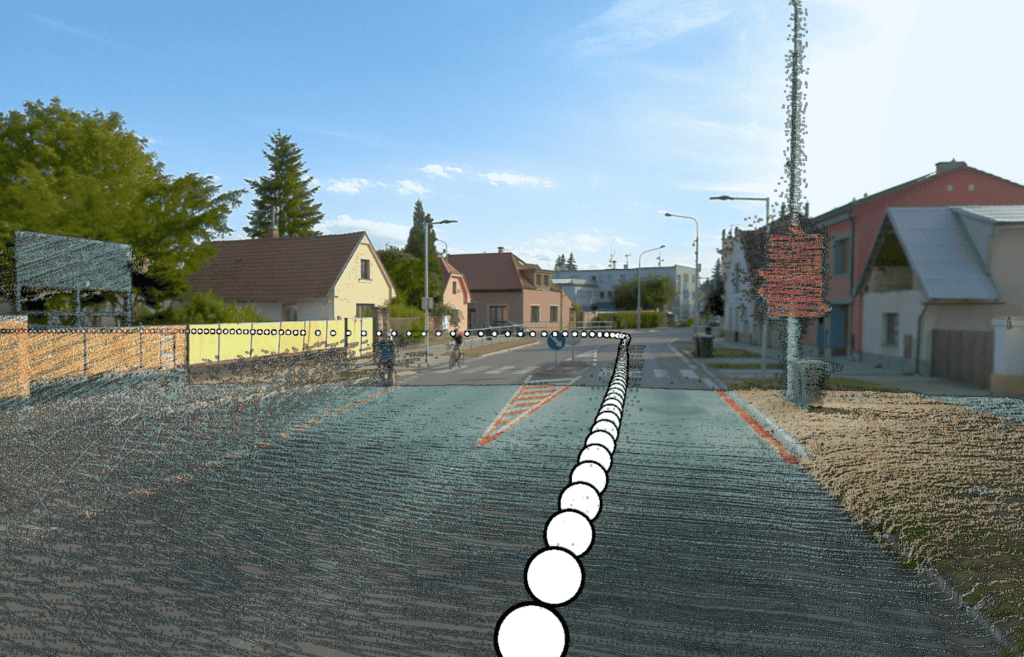
We look forward to an exciting 2025 and invite you to join us on this journey!
Curious how Mosaic can elevate your work? Contact our team to learn more and start transforming your projects today!
The article was prepared by Ivan Hepp, LiDAR specialist and Product Manager at Mosaic.

